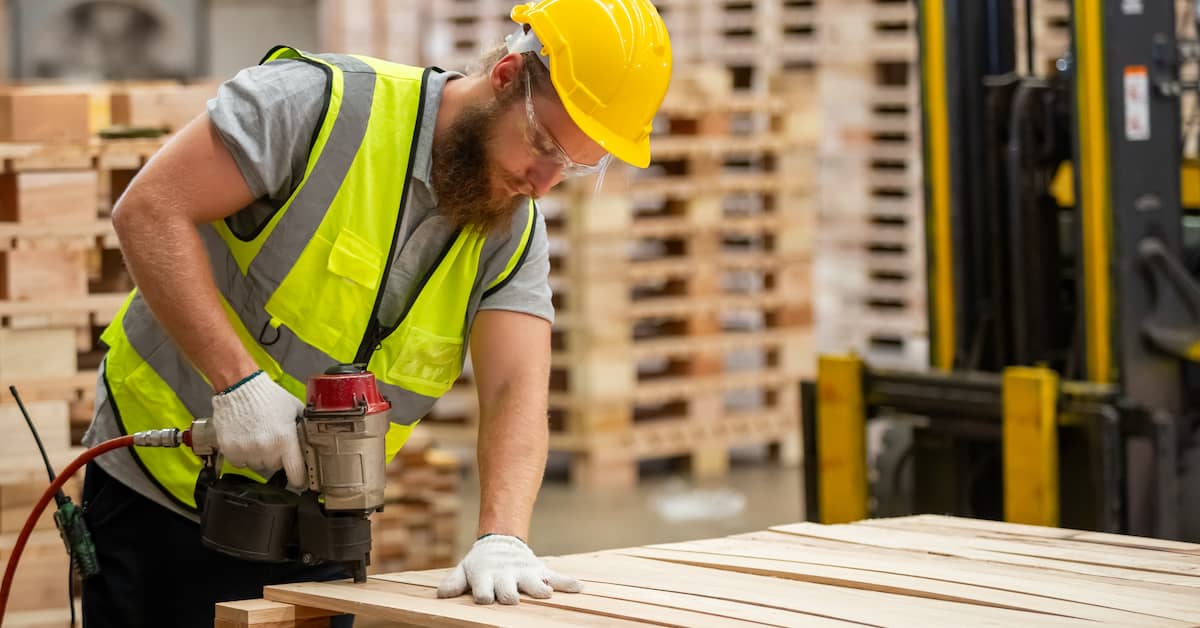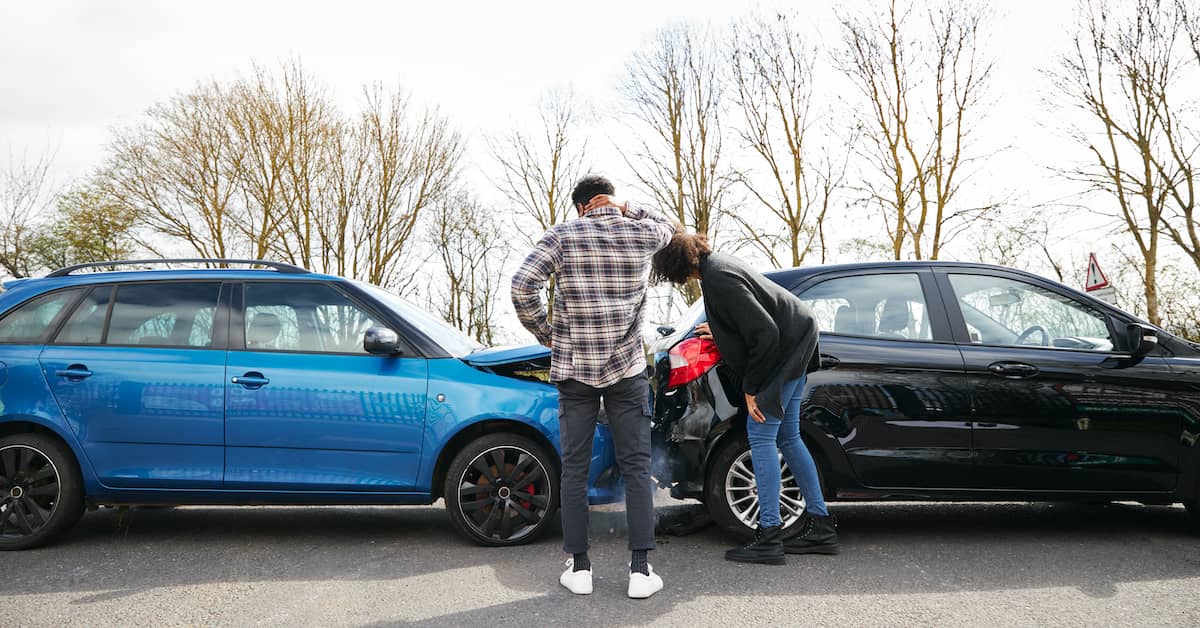
Nail Guns Are the No. 2 Cause of Construction Injuries
Suffering a nail gun injury at work is more of a risk than you may realize. Nail guns cause approximately 37,000 serious injuries every year, making them the second-most dangerous piece of construction equipment, second only to ladders. 60% of those injuries were work-related.
Clearly, nail guns are a serious safety risk in the construction industry, which is already plagued by injuries and wrongful death. Understanding the risks and what can be done to minimize them could save construction workers from painful injuries and death.
If you’ve suffered a nail gun injury, you may be in for some unfortunate ramifications. Medical bills, missed work, recovery—it can be overwhelming. The construction accident attorneys at Maggiano, DiGirolamo & Lizzi can help ensure you explore every avenue to the compensation you need and deserve.
Call (201) 585-9111 today to schedule a FREE consultation. With years of experience handling construction injury claims, we have a passion for justice and the courage to pursue it.
Nail Gun Injury Causes
The Occupational Safety and Health Administration (OSHA) found that 2 out of 5 residential carpenters experienced a nail gun injury over a four-year period. Puncture wounds to the hands and fingers are the most common result of nail gun accidents, but nail guns can also cause more serious injuries and even death.
Nail guns all have the potential to cause serious injury, but nail guns with a bump or automatic trigger—known as a “contact trip trigger”—can release extra nails unexpectedly. OSHA research has shown that multi-shot contact trigger nail guns cause more than twice as many injuries as single-shot sequential trigger nail guns.
Workers can also suffer nail gun-related injuries if they are working too fast, have not been trained well enough, or are keeping the trigger squeezed when not nailing. With each nail released from the gun comes the potential for a terrible injury.
What Is the Most Common Nail Gun Injury?
Nail guns are powerful tools that, when used improperly, can become dangerous. The resulting injuries can be severe and may have lasting effects on workers’ lives.
Over half of nail gun injuries were puncture wounds to the hands or fingers, making these the most common type of injury caused by nail guns. These injuries often occur when nails are accidentally discharged during tasks that require hand placement near the nailing area.
Nail guns can cause a wide range of other injuries, including:
- Eye Injuries: Nails and debris can cause damage to the eye, sometimes leading to partial or total blindness
- Puncture Wounds to Feet or Legs: Discharged nails can easily go through clothing and footwear
- Head & Face Injuries: Nails can ricochet or misfire, strike the face or head, and cause potentially life-threatening injuries
- Chest & Abdominal Injuries: A nail could pierce the chest or abdomen and cause damage to internal organs, which could be fatal
- Bone Fractures: In some instances, nails could penetrate deep enough to fracture bones
Nail gun accidents don’t just lead to painful injuries but also medical expenses, lost wages, and physical and emotional suffering. If you’ve been injured by a nail gun, compensation will be an important part of your recovery. An experienced construction accident attorney will be a valuable ally in your pursuit.
How To Prevent Nail Gun Injuries
Construction work is known to be dangerous. However, we are responsible for doing everything in our power to employ safety measures to protect construction workers. OSHA recommends that employers and workers take certain steps to make nail guns safer to use.
Provide Proper Training
New and experienced workers alike can benefit from training on operating nail guns safely. This includes understanding how nail guns work, the proper handling of different types of triggers, and the main causes of nail gun injuries associated with each trigger.
Training should also cover instructions from the tool manual, where the manual is kept, and hands-on practice on how to load the nail gun, operate the air compressor, fire the nail gun, hold the lumber, and handle work in awkward positions.
Use Full Sequential Trigger Nail Guns
According to the Consumer Product Safety Commission, contact trigger nailers are susceptible to double firing, especially when trying to accurately align the nail gun with the workpiece. An unintended nail firing often happens faster than the worker can react and release the trigger, resulting in injury. Double firing can be a serious problem for new workers trying to compensate for recoil and when workers are forced to work in awkward positions or tight spaces.
A nail can also be released unexpectedly if the safety contact tip is accidentally knocked or pushed into an object or a person. The full sequential trigger is the safest mechanism for the job, as it reduces the risk of unintentional nail discharge and double firing.
Provide Personal Protective Equipment
OSHA requires that construction workers wear safety shoes, which help protect the workers’ toes from nail gun injuries. Employers should also provide hard hats, eye protection, and hearing protection to workers using nail guns.
Establish Nail Gun Work Procedures
Contractors and supervisors should develop comprehensive rules and procedures to make nail gun work as safe as possible. This includes checking tools and power sources before starting work, checking lumber surfaces for trouble spots, disconnecting the nail gun from compressed air when not in use, and setting standards for awkward position jobs and jobs in high spaces.
Encourage Reporting & Discussion of Injuries & Close Calls
Many nail gun injuries go unreported. Employers need to implement policies and practices that encourage injury reporting. This will help ensure injured workers receive medical attention and help contractors address safety risks that could lead to additional injuries if unaddressed.
What To Do After a Nail Gun Accident
In the unfortunate event that the above safety precautions haven’t been taken and you are injured by a nail gun, there are several steps you can take to protect your health and legal rights.
- Seek Immediate Medical Attention: A nail gun injury can lead to serious complications. Get medical treatment right away. Even if your injury seems minor, getting evaluated by a medical practitioner is important for both your health and your legal rights.
- Report the Accident: Inform your employer or supervisor as soon as possible, but no later than 14 days after the incident (up to 90 days in some cases) as required by N.J. Stat. § 34:15-17. Reporting within the legal timeframe is essential for your claim.
- Document the Scene: If you can, take photos of your injury, the nail gun, and the surrounding area. This documentation will serve as evidence for your claim.
- Keep Detailed Records: Keep all documentation of your injuries, expenses, missed work, and communications with employers and insurance companies.
- Contact a Construction Accident Attorney: A lawyer can help you through the process of securing compensation after a nail gun injury. If your workers’ comp claim is denied or your injury was due to unsafe working conditions, an attorney can guide and support you while seeking just recompense.
Taking these steps helps to ensure you get the medical care and compensation you need after a nail gun accident. Contact an attorney early on to go over your options and make sure you are taking every opportunity to protect your rights and your future.
How Can a Construction Accident Attorney Help?
A construction accident lawyer can be invaluable when dealing with a nail gun injury. Here’s how they can help:
- Evaluate Your Case: A lawyer can evaluate the details of your accident to determine the best legal strategy.
- Gather Evidence: They can collect medical records, witness statements, and other evidence to build a strong claim for recovery.
- Negotiate with Insurance Companies: An attorney will communicate with the insurance companies and try to negotiate an optimal settlement.
- Seek Compensation: They will assemble a claim for damages, including medical bills, lost wages, pain and suffering, and other related expenses.
- Legal Representation in Court: Should a fair settlement be out of reach, a lawyer will be prepared to represent you in court and advocate for your rights.
- Handle Deadlines: They will also make sure that all legal deadlines are met, giving you the space and time to focus on healing from your injuries.
If you’ve been injured in a nail gun accident, you may be eligible for compensation for your losses. A New Jersey construction accident lawyer is your best ally in your pursuit.
Contact Maggiano, DiGirolamo & Lizzi Today
At Maggiano, DiGirolamo & Lizzi, we understand the impact a nail gun injury can have on your life, your work, and your financial well-being. Our dedicated construction accident attorneys are here to help you on your path to securing the compensation necessary for your recovery. We are not afraid to fight for the rights of injured workers and will work to hold the responsible parties accountable.
Contact us today to schedule a FREE consultation to discuss your case. We will evaluate your situation, answer any questions, and provide the legal guidance you need to move forward. We represent clients in New Jersey and New York.


















